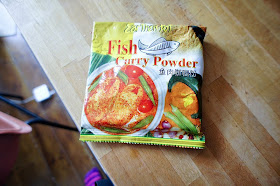 I didn't hear much about last weekend's Taste of India, held at the Southbank so it was purely by chance that I stumbled across it on my way to The Hayward Gallery. I spent much of my time wandering around an exhibition, distracted by thoughts of curry. There were roughly around 20 stalls all wafting with delicious smells and it was pretty obvious what lunch was going to be. A few were bizarre, offering not only curry but paella and one stall even had a warming tray full of penne to serve alongside their curries. We swerved that one.
I didn't hear much about last weekend's Taste of India, held at the Southbank so it was purely by chance that I stumbled across it on my way to The Hayward Gallery. I spent much of my time wandering around an exhibition, distracted by thoughts of curry. There were roughly around 20 stalls all wafting with delicious smells and it was pretty obvious what lunch was going to be. A few were bizarre, offering not only curry but paella and one stall even had a warming tray full of penne to serve alongside their curries. We swerved that one. After circumnavigating the market, we decided on sharing a few small dishes to reduce the opportunity of missing out on the good stuff. We immediately ruled out a couple of stalls manned by what looked like gap yah students who, like, totally discovered India on their travels yeah? and instead headed for the most interesting. A lamb nihari with roomali roti was picked purely because that stall had a heated dome which the chef rolled the rotis out, flipped and then cooked on to order, to ensure you had fresh bread to scoop up your curry with. The lamb was tender and in a thin gravy which was well spiced with cardamom. For £3.50, this was decent and the star really was the delicate, pliable roti. I wish I'd had more room to try the dosas they were making fresh on their hot plate.
After circumnavigating the market, we decided on sharing a few small dishes to reduce the opportunity of missing out on the good stuff. We immediately ruled out a couple of stalls manned by what looked like gap yah students who, like, totally discovered India on their travels yeah? and instead headed for the most interesting. A lamb nihari with roomali roti was picked purely because that stall had a heated dome which the chef rolled the rotis out, flipped and then cooked on to order, to ensure you had fresh bread to scoop up your curry with. The lamb was tender and in a thin gravy which was well spiced with cardamom. For £3.50, this was decent and the star really was the delicate, pliable roti. I wish I'd had more room to try the dosas they were making fresh on their hot plate. Horn OK Please had the biggest line, and they were selling dishes I'd not seen before. Billed as Indian street snacks, bowls of vegetables and sauces were out, and they meticulously filled hollowed out puffs (which I later found out were pani puri) with mashed potato and chutneys. We opted instead for a samosa chaat; a huge samosa was split a little and topped with chickpea curry, mint and coriander chutney, a little yoghurt and red onion. A further sprinkle of (I think) fried chickpea flour strands (sev) and a few pomegranate seeds finished this, and for £3 we headed off to devour it.
Horn OK Please had the biggest line, and they were selling dishes I'd not seen before. Billed as Indian street snacks, bowls of vegetables and sauces were out, and they meticulously filled hollowed out puffs (which I later found out were pani puri) with mashed potato and chutneys. We opted instead for a samosa chaat; a huge samosa was split a little and topped with chickpea curry, mint and coriander chutney, a little yoghurt and red onion. A further sprinkle of (I think) fried chickpea flour strands (sev) and a few pomegranate seeds finished this, and for £3 we headed off to devour it. The richness of the dense, deep fried samosa pastry was saved with the tangy, spicy mint and coriander chutney. The Sev on top gave good crunch, while the chickpeas were creamy and slightly sweet. I totally loved this - so much so that I went back to try their Bhel Puri; a paper cone is filled with puff rice, crushed pani puri, that sev again and more chutneys and herbs. My friend went to Moti Mahal's stall to get a lamb wrap; this was abandoned in favour of my cone. Abandoning meat for a vegetarian snack if almost unheard of, so that's a testament to how great it was.
The richness of the dense, deep fried samosa pastry was saved with the tangy, spicy mint and coriander chutney. The Sev on top gave good crunch, while the chickpeas were creamy and slightly sweet. I totally loved this - so much so that I went back to try their Bhel Puri; a paper cone is filled with puff rice, crushed pani puri, that sev again and more chutneys and herbs. My friend went to Moti Mahal's stall to get a lamb wrap; this was abandoned in favour of my cone. Abandoning meat for a vegetarian snack if almost unheard of, so that's a testament to how great it was. They can be found at The Stock Mkt (Bermondset Square SE1 3UN), Friday 27th April 5pm - 10pm and at The Hiff in Henley on Thames. See their website for more details.
They can be found at The Stock Mkt (Bermondset Square SE1 3UN), Friday 27th April 5pm - 10pm and at The Hiff in Henley on Thames. See their website for more details.Wikipedia has an excellent article on 'horn ok please', in case you were wondering what it meant.






















